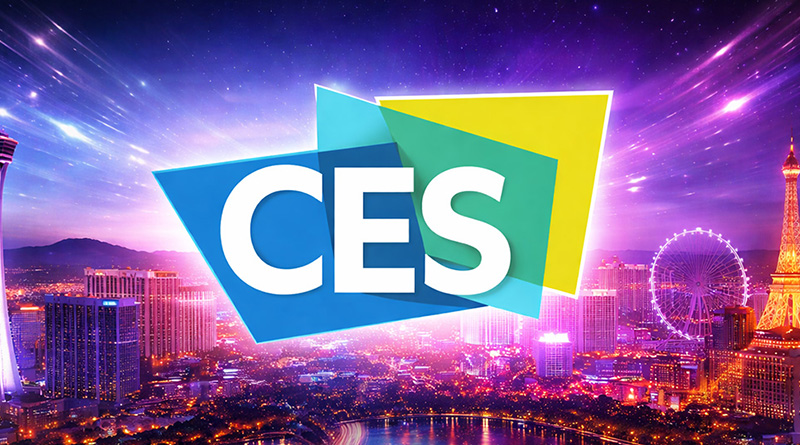HDMI 2.1a Certification Announced Including New Source-Based Tone Mapping (SBTM) Feature

The HDMI Licensing Administrator (HDMI LA) has this week announced in a pre-CES 2022 virtual press briefing an update to the HDMI certification scheme that is coming soon, updating from the previous HDMI 2.1 to the new HDMI 2.1a scheme. The new certification scheme also accounts for a new capability called “Source Based Tone Mapping” (SBTM) which is designed to enhance and optimize HDR experience and performance.
Source-Based Tone Mapping (SBTM)

Announced this week is a new feature available within the HDMI 2.1a certification scheme which is designed to enhance HDR experience from displays where it is supported. As HDMI LA explain: “Source-Based Tone Mapping (SBTM) is a new HDR feature that allows a portion of the HDR mapping to be performed by the Source device in addition to tone mapping done by the Display… This enables the source to send a video signal that takes full advantage of a specific display’s HDR capability by adjusting its output to take better advantage of each display’s potential. SBTM adds a powerful new HDR capability to HDMI-enabled products, further enhancing consumers’ high-quality viewing experiences.”
SBTM is designed to optimize the experience of HDR content on your display through handling of the content better from the source device, e.g. a set top box, games console or a PC. It must be supported from both the source device (input) and from the display (output) for SBTM to work, although HDMI LA point out that many TV’s and other devices should be updatable via a firmware to support this new feature. Whether or not they will be updated is another question of course.
Not all displays have the same HDR capability and sometimes, a source device needs to combine different types of content (HDR, SDR, dynamic HDR, graphics) together at the same time. For example, when you view a menu of video thumbnails from a streaming video service, some of the thumbnails might be HDR and others might be SDR, and the menu is rendered using graphics. When a Source device combines different types of content, SBTM enables the source to send a video signal that takes full advantage of a specific display’s SDR, HDR and Dynamic HDR capability by adjusting its output to take advantage of each display’s potential As with other HDR technologies, rather than adopt a fixed set of colour and brightness ranges, SBTM allows the Source to adapt to a specific display. SBTM can also be used by PCs and gaming devices to eliminate manual user optimization for HDR.
SBTM is designed specifically with PC and game use cases in mind. There are many benefits to using SBTM in a multi-windowed PC environment; for example, one window can display rich video while another window is optimized for black text on a white background at the same time, all without the need for sliders or manual user configuration.
SBTM does not replace existing HDR technologies such as HDR10, HLG and HDR dynamic metadata systems. Instead, SBTM adds an additional HDR capability to HDMI-enabled products, offering consumers additional high-quality viewing experiences.
“HDMI 2.1a” Future confusion – keep in mind SBTM is still optional

Keep in mind that HDMI 2.1a is just the latest update to the certification scheme, and as per our recent article, all future HDMI certified devices will technically be certified under this new and most recent scheme. HDMI 2.1 will be closed, and 2.1a will be the active certification scheme. Like all the other features associated in the minds of the consumer with the branding of “HDMI 2.1”, whether that’s high FRL bandwidth, VRR, ALLM, eARC or anything else – this new SBTM feature is also optional.
This means that officially all future HDMI certified devices would be certified under the 2.1a scheme, although manufacturers are not supposed to label the version number in their spec pages or marketing at all, they are only supposed to list HDMI and then provide a breakdown of which optional features are supported. As we explained in our previous article, this makes it super confusing when buying a new device or display, as manufacturers could (and probably will) label their devices as “HDMI 2.1”, or probably now “HDMI 2.1a” when this is being used. The term has become so closely linked in the minds of the market with certain capabilities and features, but unfortunately as we highlighted before you cannot put any faith in the version number listed by a manufacturer really.
This forthcoming update to 2.1a will further add to this confusion we think, as a new iteration implies to most people a change or an improvement in capabilities. When they then hear about how this new SBTM feature was added, they might assume that a 2.1a device would therefore include it. That would probably seem logical, but in actual fact the capability is optional and isn’t necessarily included.
We wrote an article recently about How to Buy an HDMI 2.1 Display and a Real HDMI 2.1 Cable in which we discussed the need to ignore the version number listed by a manufacturer if they provide it (which they officially shouldn’t), and instead look specifically for the listed supported features that you might want. This new SBTM feature is in the same boat, if you want it, then you’ll need to look for it being specifically listed in the specs. Do not assume that something labelled as 2.1a supports SBTM, at some point we expect most new HDMI certified devices to be labelled as 2.1a regardless of which of the optional features they support.
Parts of the HDMI.org webpage have now been updated to reference HDMI 2.1a and the new SBTM capability (e.g. this page)
We may earn a commission if you purchase from our affiliate links in this article- TFTCentral is a participant in the Amazon Services LLC Associates Programme, an affiliate advertising programme designed to provide a means for sites to earn advertising fees by advertising and linking to Amazon.com, Amazon.co.uk, Amazon.de, Amazon.ca and other Amazon stores worldwide. We also participate in a similar scheme for Overclockers.co.uk, Newegg, Bestbuy , B&H and some manufacturers.
Stay up to date
 |  |  |  |
| Browser Alerts | Follow on X | Subscribe on YouTube | Support Us |
All the latest news from CES

Popular Trending News
 LG Announce the 32GX870B, Their First 32″ 4K Tandem WOLED Monitor December 31, 2025 LG have released some details about another new monitor that will be launched in 2026 and showcased at CES next week. The 32GX870B is a 32″ sized screen with a 3840 x 2160 “4K” resolution and 240Hz native refresh rate,…
LG Announce the 32GX870B, Their First 32″ 4K Tandem WOLED Monitor December 31, 2025 LG have released some details about another new monitor that will be launched in 2026 and showcased at CES next week. The 32GX870B is a 32″ sized screen with a 3840 x 2160 “4K” resolution and 240Hz native refresh rate,… MSI Announce Two New 32″ 4th Gen QD-OLED Monitors with DarkArmor Film January 1, 2026 Originally Published 31 December 2025, last updated 1 January 2026 MSI have today announced two new 32″ 4K 240Hz monitors in their QD-OLED line-up ahead of CES 2026 next week. Both the MPG 322UR QD-OLED X24 and MAG 321UP QD-OLED…
MSI Announce Two New 32″ 4th Gen QD-OLED Monitors with DarkArmor Film January 1, 2026 Originally Published 31 December 2025, last updated 1 January 2026 MSI have today announced two new 32″ 4K 240Hz monitors in their QD-OLED line-up ahead of CES 2026 next week. Both the MPG 322UR QD-OLED X24 and MAG 321UP QD-OLED… Asus ROG Swift PG34WCDN Unveiled with 34″ 360Hz 5th-Gen QD-OLED Panel January 4, 2026 Asus have announced today their new ROG Swift PG34WCDN OLED monitor, featuring Samsung Display’s brand-new 5th-Gen QD-OLED panel that we saw announced a few days ago. It’s a 34” ultrawide monitor with a subtle 1800R curvature and offering a 3440…
Asus ROG Swift PG34WCDN Unveiled with 34″ 360Hz 5th-Gen QD-OLED Panel January 4, 2026 Asus have announced today their new ROG Swift PG34WCDN OLED monitor, featuring Samsung Display’s brand-new 5th-Gen QD-OLED panel that we saw announced a few days ago. It’s a 34” ultrawide monitor with a subtle 1800R curvature and offering a 3440… Samsung Display Announce Mass Production of New 34″ QD-OLED Panel with V-Stripe Sub-Pixel Layout January 1, 2026 Panel manufacturer Samsung Display have announced the mass production of the world’s first 34″ ultrawide 360Hz QD-OLED panel, featuring what they are referring to as a “V (Vertical)-Stripe” pixel structure. This will offer a true RGB-stripe layout to improve text…
Samsung Display Announce Mass Production of New 34″ QD-OLED Panel with V-Stripe Sub-Pixel Layout January 1, 2026 Panel manufacturer Samsung Display have announced the mass production of the world’s first 34″ ultrawide 360Hz QD-OLED panel, featuring what they are referring to as a “V (Vertical)-Stripe” pixel structure. This will offer a true RGB-stripe layout to improve text… The LG 39GX950B is the World First 39″ 5K2K OLED Monitor to be Announced December 26, 2025 Ahead of CES in a couple of week’s time, LG Electronics have unveiled their line-up of new monitors that will be on show at the event. They also announced the global launch of their new premium gaming monitor brand, UltraGear…
The LG 39GX950B is the World First 39″ 5K2K OLED Monitor to be Announced December 26, 2025 Ahead of CES in a couple of week’s time, LG Electronics have unveiled their line-up of new monitors that will be on show at the event. They also announced the global launch of their new premium gaming monitor brand, UltraGear…
